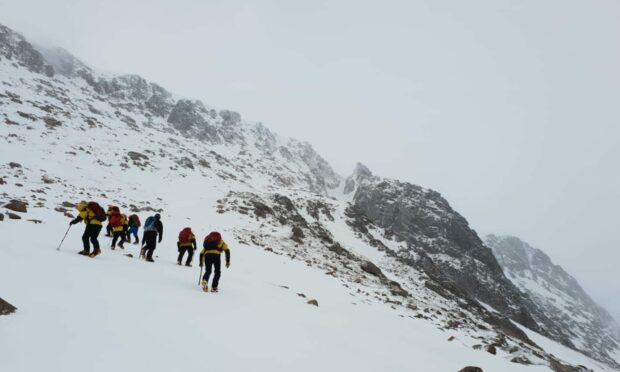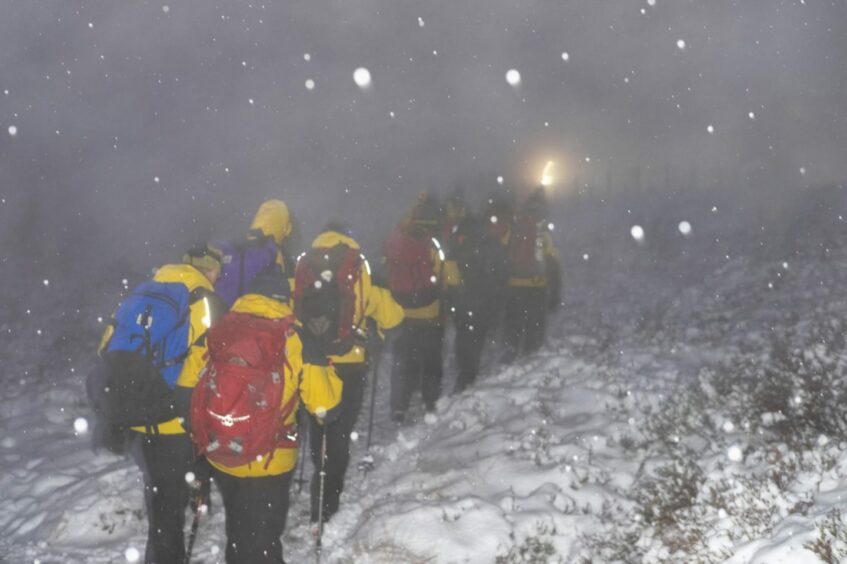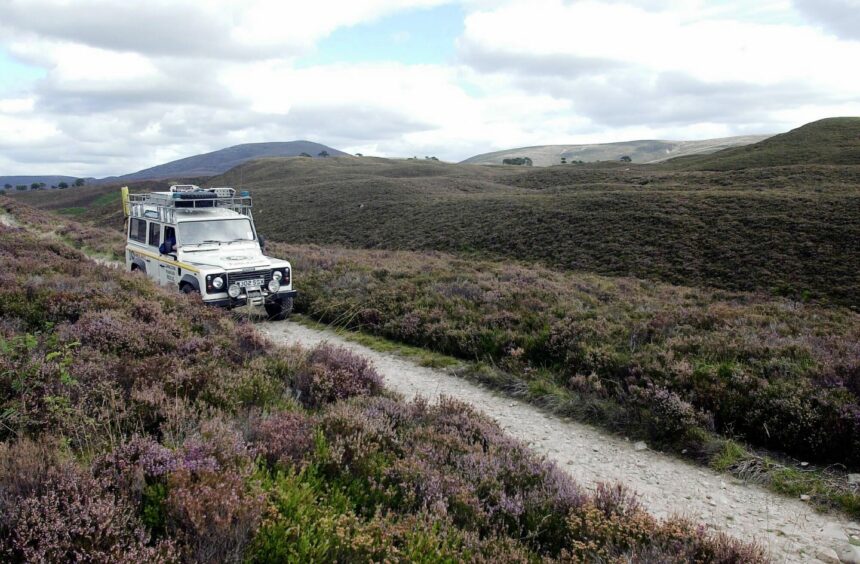The former leader of Cairngorm Mountain Rescue Team has spoken about her near-death experience as she marks the team’s 60th anniversary.
Mollie Porter fell in love with mountaineering as a teenager and quickly became besotted by the great outdoors.
In 1972, she made history by becoming the first female to lead a mountain rescue team in Scotland.
During her 18-year tenure with the team, the now 85-year-old became a trailblazer for both her navigation skills and her motivation.
She completed hundreds of rescues, saving countless lives.
For the last seven decades of her life, the mountains have become a labour of love for the pensioner.
In an interview with BBC reporter Linda Sinclair, Ms Porter said the rescue team, which celebrates its 60th anniversary this year, was “a huge part” of her life.
She said: “I had the enthusiasm and the commitment to do anything that came my way; concerning the team.
“I had all the knowledge I needed, the technical knowledge to bring up the team to a really good standard and I was so pleased when I left the team that they are where they are now.”
Despite her many years combing the Cairngorm mountains, Ms Porter wasn’t ignorant of the dangers, having been victim to an avalanche.
‘It was one of the biggest avalanches ever recorded in the Cairngorms’
Hillwalking with a small group one winter she was swept 900ft down a mountain during one of the biggest avalanches ever recorded in the Cairngorms.
With 30ft of debris below, the 85-year-old believed at that moment her life was about to end.
However, to her amazement, she and her trusty avalanche dog came away unscathed.
The veteran mountaineer explained: “I was standing in just the wrong spot, and I fell about 900ft. The debris at the bottom was 30ft deep. I got partially buried but managed to get out.
“I didn’t break anything. I was still alive, I thought I was going to die. I did throw my ice axe’s away, so I made sure I didn’t have an appendix removed.
“My poor search and rescue dog was also buried. I was shaking like a leaf standing, looking at the mess I had made of the Corrie, the whole slope came down with me, so I did a good proper job on it.
“I thought this is it, this is how I am going to die. Both my dog and I were okay. I was bruised but nothing else.”
Near-death experience
Ms Porter grew up in the southern English county of Hertfordshire.
Aged 16, she caught her first glimpse of the UK’s highest mountain Ben Nevis during a family holiday in the Highlands.
Since that day, she became mesmerised by the country’s peaks.
Upon returning home, she went to her local library to take out a copy of “Mountaineering in Scotland” by WH Murray.
Entranced by the book, she wrote to the author who invited her to take her climbing in Scotland.
Despite being just 17 years old, the mountaineering fanatic hitchhiked about 450 miles from Stevenage to Glencoe to meet Bill Murray in person and climb Curved Ridge on Buachaille Etive Mor – an exposed scrambling route – to reach the summit.
In the years that followed, Ms Porter worked as an instructor at Glenmore Lodge near Aviemore and joined Cairngorm Mountain Rescue Team, where she went on to make history and become the first female to lead a team of its kind in Scotland.
‘It should never have happened’
In November 1971, Cairngorm Mountain Rescue Team faced one of their worst call-outs on the Cairngorm Plateau.
Five teenagers from Edinburgh froze to death alongside their 18-year-old guide after being trapped in a snowstorm.
Recalling the tragedy, Ms Porter says the incident was a “turning point for outdoor pursuits.”
“For them to die, was shocking,” she added.
“It was the worst thing that could ever have happened and the only good thing you can say that came from that was an awakening of people’s realisation that you just don’t go willy nilly, on a whim, up into the Cairngorms in November when the winter is turning. It’s a warning for mountaineers. You must be on your guard.”
She added: “You cannot imagine what the conditions were like on that plateau that night.
“We got the call the next day because the party had split. The strong ones went across to a high-level bothy, which in later years was removed because people thought it was luring them to go up onto the higher ground when they should have been thinking about getting back off it.
“The weaker party must have gotten lost because they weren’t located until two or three days later.
“They had three days of camping gear, all the food, everything with them but it was the wrong time of year. It was too long a trip for them. They split the party, they were the weakest ones who were left behind. It should never have happened.”



